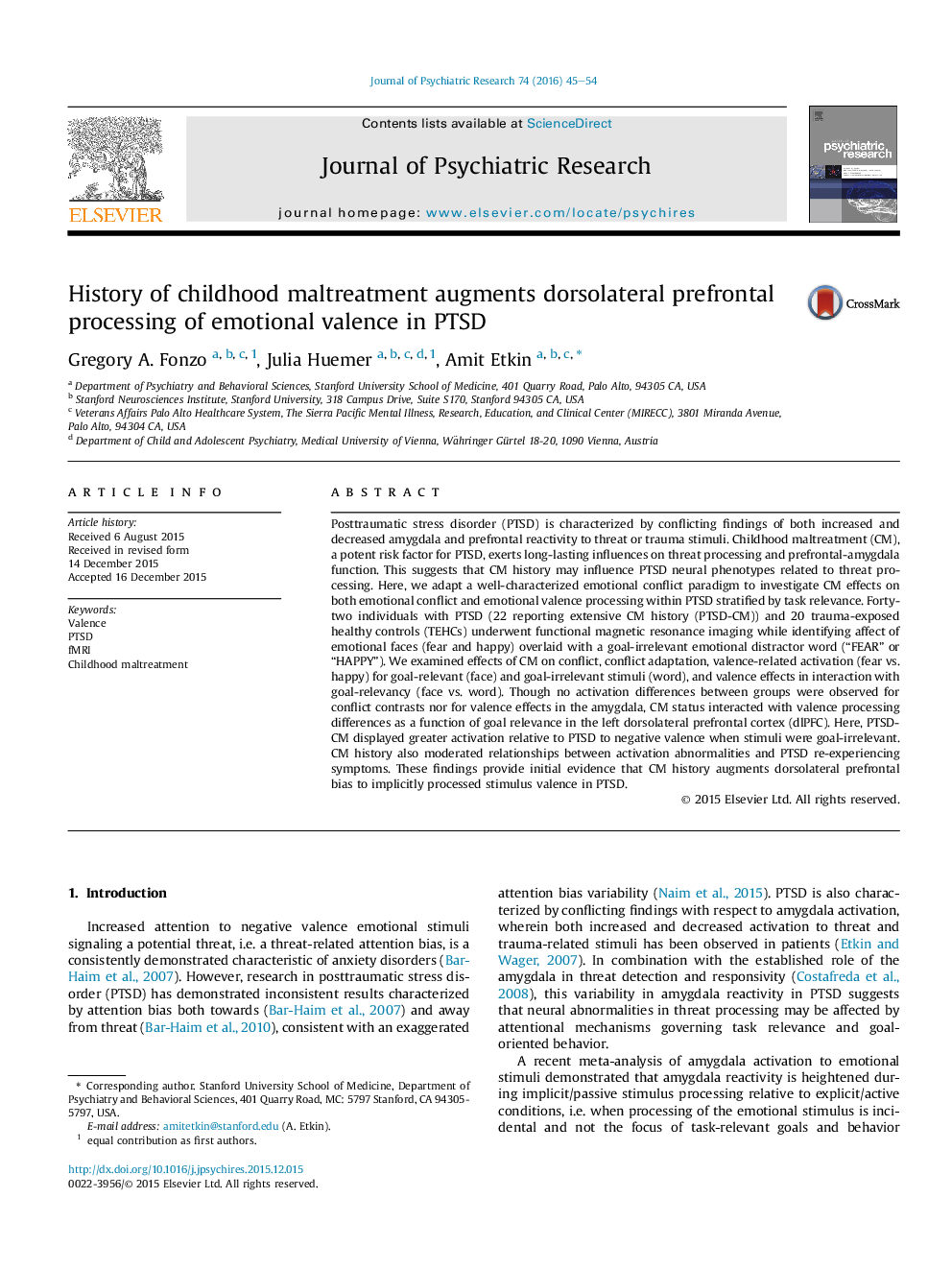| Article ID | Journal | Published Year | Pages | File Type |
|---|---|---|---|---|
| 326463 | Journal of Psychiatric Research | 2016 | 10 Pages |
•CM history in PTSD influenced left dlPFC activation to facial emotions overlaid with emotion words.•In PTSD with CM, left dlPFC activation was greater to the fear vs. happy word regardless of face.•In PTSD with CM, left dlPFC activation to face valence was inversely related to re-experiencing.
Posttraumatic stress disorder (PTSD) is characterized by conflicting findings of both increased and decreased amygdala and prefrontal reactivity to threat or trauma stimuli. Childhood maltreatment (CM), a potent risk factor for PTSD, exerts long-lasting influences on threat processing and prefrontal-amygdala function. This suggests that CM history may influence PTSD neural phenotypes related to threat processing. Here, we adapt a well-characterized emotional conflict paradigm to investigate CM effects on both emotional conflict and emotional valence processing within PTSD stratified by task relevance. Forty-two individuals with PTSD (22 reporting extensive CM history (PTSD-CM)) and 20 trauma-exposed healthy controls (TEHCs) underwent functional magnetic resonance imaging while identifying affect of emotional faces (fear and happy) overlaid with a goal-irrelevant emotional distractor word (“FEAR” or “HAPPY”). We examined effects of CM on conflict, conflict adaptation, valence-related activation (fear vs. happy) for goal-relevant (face) and goal-irrelevant stimuli (word), and valence effects in interaction with goal-relevancy (face vs. word). Though no activation differences between groups were observed for conflict contrasts nor for valence effects in the amygdala, CM status interacted with valence processing differences as a function of goal relevance in the left dorsolateral prefrontal cortex (dlPFC). Here, PTSD-CM displayed greater activation relative to PTSD to negative valence when stimuli were goal-irrelevant. CM history also moderated relationships between activation abnormalities and PTSD re-experiencing symptoms. These findings provide initial evidence that CM history augments dorsolateral prefrontal bias to implicitly processed stimulus valence in PTSD.
Graphical abstractFigure optionsDownload full-size imageDownload as PowerPoint slide
